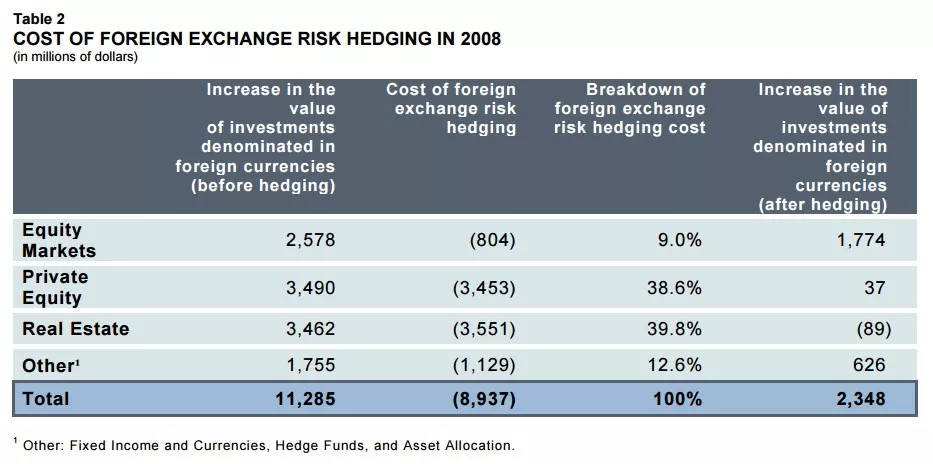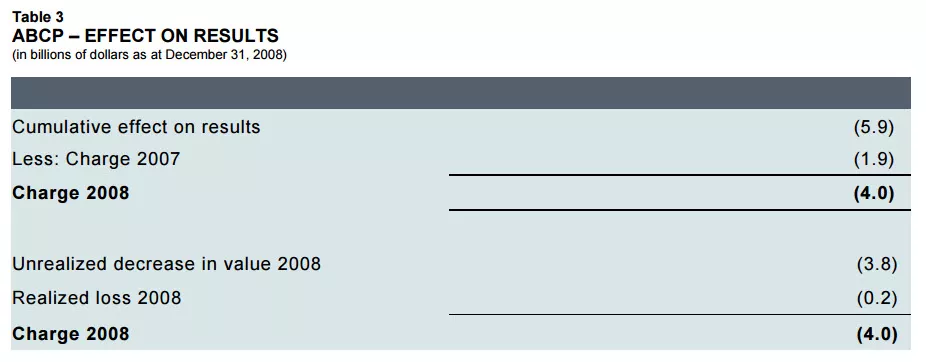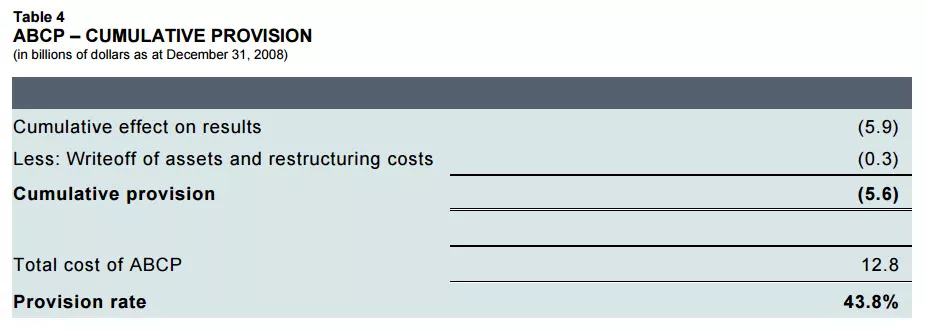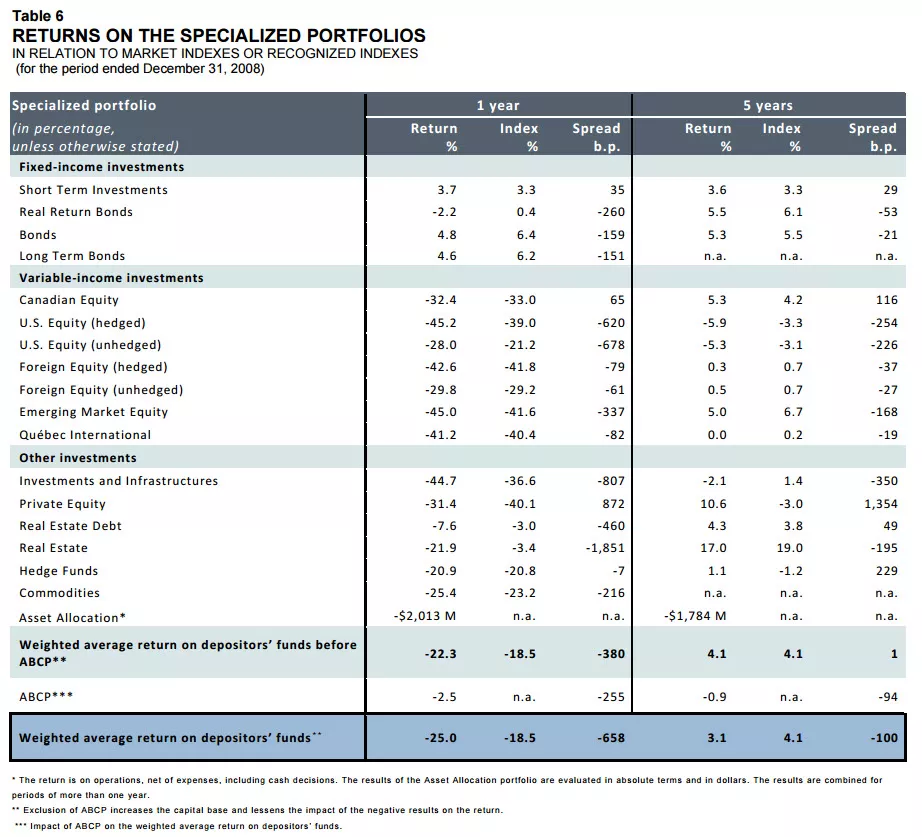The Caisse de dépôt et placement du Québec announces a weighted average return on depositors’ funds of -25.0% for the year ended December 31, 2008
The Caisse de dépôt et placement du Québec today announced a -25.0% weighted average return on depositors’ funds for the year ended December 31, 2008. In comparison, the return on the benchmark portfolio was -18.5% and the median return for the universe of large Canadian pension funds was -18.4%.
The year’s net investment results of -$39.8 billion (of which 56% is unrealized decreases in value) have cancelled out a portion of the $63.2 billion of returns earned in the preceding five years. Net deposits totaled $4.6 billion. From January 1 to December 31, 2008, depositors’ net assets therefore declined from $155.4 billion to $120.1 billion.

The individual returns for the main depositors ranged from -17% to -27% in 2008.
AN UNPRECEDENTED FINANCIAL CRISIS
“As with all other investors, the first element that explains our return this year is the global financial crisis that broke out in the fourth quarter. In October 2008, in a matter of days, the world tipped into the worst financial and economic crisis of the past 80 years. The markets became disjointed. All asset classes – with the exception of the best government securities – recorded steep and simultaneous losses. The lack of lenders and buyers caused market values to plummet. The global crisis also drove the Canadian dollar down sharply: on the year, it lost 20% against the U.S. dollar, 16% against the euro and 35% against the yen,” explained Fernand Perreault, President and Chief Executive Officer of the Caisse.
“These unusual events affected all investors, but certain factors had a specific or more pronounced impact on our portfolio, such as our large holdings of asset-backed commercial paper (ABCP) and the cost of hedging the foreign exchange risk of our assets outside Canada, which increased significantly as the Canadian dollar fell,” Mr. Perreault added.
PROACTIVE CRISIS MANAGEMENT
In response to a global financial crisis and the significant likelihood that it would intensify, as well as a Canadian dollar in free fall, the Caisse took the precaution of changing its asset allocation last October to increase its liquid assets and to reduce its stock market exposure. The Caisse’s actions included selling equities, closing out futures contracts and reducing its foreign exchange hedging.
“At no time during this period did the Caisse run short of, or come close to running short of, liquid assets. Still, our analysis of the events prompted us to anticipate a deepening of the crisis by preserving depositors’ capital and making a high level of liquid assets an important component of our strategy for the months to come,” Mr. Perreault explained.
As a result of these changes, the weight of Fixed Income increased from 30% to 44% and the weight of Equity Markets fell from 36% to 22%. As at December 31, 2008, the effect of these asset allocation changes on the 2008 return was positive.
“Given the markets’ volatility since the end of 2008, these decisions significantly improved our overall positioning. The rebalancing of the portfolio toward equities will take place gradually as a function of our assessment of the various markets and in co-operation with our depositors,” Mr. Perreault explained.
NET INVESTMENT RESULTS AND MARKET VALUES
Unrealized decreases in value, or paper losses, totalled $22.4 billion in 2008, or 56.3% of the net investment results of -$39.8 billion. Net investment income, including interest income, dividends and rent, amounted to $5.8 billion. Realized losses on the sale of investments during the year totalled $23.2 billion, including $6.1 billion for the realized portion of the cost of foreign exchange risk hedging alone.
“The financial crisis caused a substantial discrepancy between the market value and the economic value of investments. In normal conditions, market value is similar to economic value, and transactions take place on that level. As a result of the financial crisis, a lack of reference transactions and high rate spreads pushed market values down to an abnormally conservative level,” Mr. Perreault explained.
For example, the Real Estate portfolio generated more net rental income in 2008 than it did in 2007, and a further increase is forecast for 2009. Even so, the value of the portfolio declined by 21.9% as a result of the financial crisis in the fourth quarter and the mark-to-market rule specified for investment companies by Canadian accounting standards.
“Valuing our illiquid investments as a function of the horizon on which they will be held would give quite a different portrait of the situation, but accounting standards require that they be valued as if they were available for sale on December 31,” Mr. Perreault pointed out.
ANALYSIS OF PERFORMANCE IN RELATION TO LARGE CANADIAN PENSION FUNDS
After five consecutive years of first-quartile returns, the Caisse’s return for 2008 (-25.0%) is significantly below the median for large Canadian pension funds that have at least $1 billion of assets (-18.4%), with a variance of 6.6%.
Several factors distinguish the Caisse from other large Canadian pension funds. Two stood out in 2008. The first is the cost of foreign exchange risk hedging. The second is the additional provision for ABCP.
First factor: the cost of foreign exchange risk hedging
The first factor that explains the variance in relation to large Canadian pension funds in 2008 is the cost resulting from foreign exchange risk hedging policy. Hedging is not a currency speculation activity. It is a means of mitigating risk, which has been in place for at least 15 years with the objective of mitigating or offsetting an increase or a decrease in the value of the Caisse’s foreign investments solely as a result of fluctuations in the Canadian dollar.
Currency hedging is a characteristic of the various investment portfolios offered to the depositors. The private equity, real estate investments and hedge funds are 100% hedged. As for equity markets, the U.S. Equity and Foreign Equity portfolios are partially hedged (an average of 29% as at September 30, 2008).
The cost of hedging was unusually high in 2008. The decline of the Canadian dollar, which occurred mainly in October, increased the value of the Caisse’s foreign investments by $11.3 billion, once converted into Canadian currency. The currency hedging policy, which is designed to smooth out the currency effect, incurred a hedging cost of $8.9 billion. This is a record amount, most of which, 78%, is due to 100% hedging of private equity and real estate outside Canada.

“By adopting a long-term policy of 100% hedging of private equity and real estate, the Caisse enables its managers to concentrate on their investment responsibilities without being concerned about currency risk. This policy is also consistent with the fact that our depositors’ commitments are in Canadian dollars,” Mr. Perreault explained.
The annual effect of currency hedging was therefore highly unfavourable in 2008. The long-term effect of this measure is neutral. Over 10 years, including 2008, it is slightly positive.
“This factor undoubtedly explains a good portion of the 2008 variance vis-à-vis large Canadian pension funds of $1 billion or more, since the Caisse has a much larger proportion of private equity and real estate outside Canada, and does more extensive overall hedging,” Mr. Perreault concluded.
Second factor: An additional charge for ABCP
The Caisse recorded an additional charge of $4.0 billion for ABCP in 2008. The charge had an impact of -2.5% on its overall return. With the $1.9-billion charge recorded as at December 31, 2007, the cumulative effect on the Caisse’s results for 2007 and 2008 is $5.9 billion.
The additional charge of $4.0 billion taken in 2008 includes an unrealized decrease in value of $3.8 billion and a realized loss of $171 million.

As at December 31, 2008, a cumulative provision of $5.6 billion was recorded against the ABCP investments. This cumulative provision represents 43.8% of the total cost of $12.8 billion.
Given the low rate of actual losses for the ABCP structures as at December 31, 2008, and the levels from which the losses may be charged to it, the Caisse believes that a large portion of this cumulative provision will be reversed in the years to come.

“The ABCP episode is without doubt a difficult page in the Caisse’s history. Over the short term, its impact on the institution’s return is significant. In 2008, the impact was amplified by wide credit spreads in the first and fourth quarters,” Mr. Perreault explained.
“In hindsight, we placed too much confidence in these securities. They were rated AAA; our portfolio was highly diversified in terms of issuers; the securities were short-term; the market had functioned adequately for nine years; the risk management policy had not set overall limits on the amount of AAA-rated money market instruments that could be held; and the level of the Caisse’s money market investments was increasing significantly along with the growth of its assets.”
“All these factors explain how the situation developed, but they do not change the conclusion: it was a mistake to accumulate so much ABCP.”
“Once the crisis broke out, we quickly brought together the Canadian and international actors in this market so that they could develop an orderly solution, under the Montréal Accord, to prevent significant, definitive losses. Since then, the Caisse has spared no effort, with the support of its depositors, to preserve the long-term value of these investments and to provide the leadership generally expected of it in Québec and Canada.”
“This episode has accelerated the review of our risk management methods and has led to new efforts in this area,” he added.
The agreement to restructure Canadian non-bank ABCP was concluded on December 24, 2008, and closed on January 21, 2009. The ABCP has been converted into long-term securities with an average maturity of seven years. On January 23, 2009, the Caisse received $389 million of interest income accumulated from August 13, 2007, to August 31, 2008. Quarterly payments are now to be provided.
“Our efforts have paid off. The restructuring agreement is a success, there are few realized losses and the securities are now generating interest income. This outcome is positive and we are confident that we can recover most of the provisions between now and the maturity of the securities. In this context, we believe it is useful to exclude ABCP from the analysis of our performance in relation to our peers so as to shed light on the five-year return on the rest of the portfolio,” Mr. Perreault explained.
Without the ABCP factor, the Caisse’s five-return year would be 4.1%, which is above the median of its peers, namely 3.6%, and close to the first-quartile threshold of 4.3%. Over the past 15 years, the Caisse has had a second-quartile five-year return only twice, in 1992 and 1999. As a result of ABCP, the five-year return is instead 3.1%, or 0.5% below the median of its peers.

RETURNS ON THE SPECIALIZED PORTFOLIOS AND VALUE SUBTRACTED IN 2008
The unfavourable variance between the Caisse’s return (-25.0%) and the weighted average return on the indexes (-18.5%) is due to various factors, but three stand out.
The first factor is ABCP, with an impact of -$4.0 billion, or -2.5%, on the overall return.
The second factor is the return spread of the Real Estate portfolio in relation to its index. Combined with the size of the portfolio, the difference subtracted $3.7 billion, or 2.1% from the Caisse’s overall return. The fiveyear return on this portfolio is 17.0% and ranks in the first quartile of large Canadian pension funds.
The third factor is the Asset Allocation operations, which made a negative contribution of $2.0 billion, or -1.1%, to the overall return. A portion of its holdings were exposed to various risk factors (credit, liquidity, volatility and inflation), which simultaneously pushed values down during the crisis in the fourth quarter. The portfolio’s operations were suspended and are being re-evaluated.
Value added over five years
The return on the benchmark index is 4.1% over five years. The value added by the specialized portfolios before ABCP is nil. After ABCP, it is -100 basis points.
DEPOSITORS’ NET ASSETS, DEPOSITORS’ TOTAL ASSETS AND TOTAL ASSETS UNDER MANAGEMENT
Depositors’ net assets amounted to $120.1 billion as at December 31, 2008, depositors’ total assets came to $186.9 billion and total assets under management were $220.5 billion.
OPERATING EXPENSES, EXTERNAL MANAGEMENT FEES AND OPERATIONAL EFFICIENCY
Operating expenses for 2008 totalled $263 million, an increase of $2 million over 2007. External management fees were $51 million, down $18 million from 2007. Expressed in cents per $100 of average net assets, operating expenses and external management fees combined were 21.2 cents in 2008 versus 21.7 cents in 2007 and 21.6 cents in 2006.
AUDIT OF THE COMBINED FINANCIAL STATEMENTS
In accordance with the law, the Auditor General of Québec audited the Caisse’s books in 2008, and his report accompanies the combined financial statements. Each year he conducts the financial audit and ensures that the Caisse’s operations comply with laws, regulations, policies and guidelines, and with the systems and procedures used to monitor and to protect its holdings.
ABOUT THE CAISSE DE DÉPÔT ET PLACEMENT DU QUÉBEC
The Caisse de dépôt et placement du Québec is a financial institution that manages funds primarily for public and private pension and insurance plans. As at December 31, 2008, it held $120.1 billion of net assets. As one of the leading institutional fund managers in Canada, the Caisse invests in the main financial markets as well as in private equity and real estate. For more information: www.lacaisse.com

- Press Release (PDF)
- Combined Financial Statements 2008 (PDF)
- 30 -

